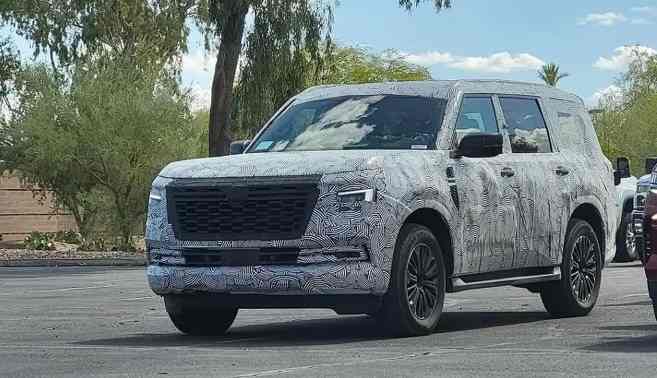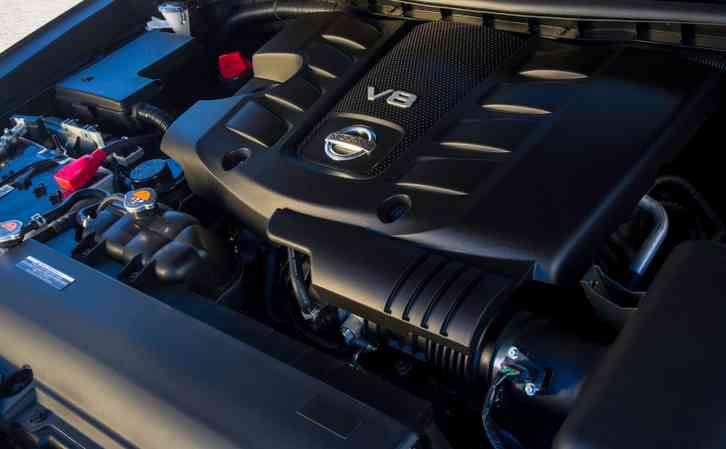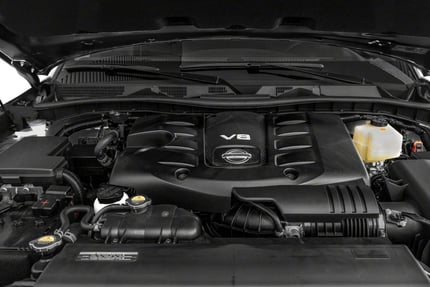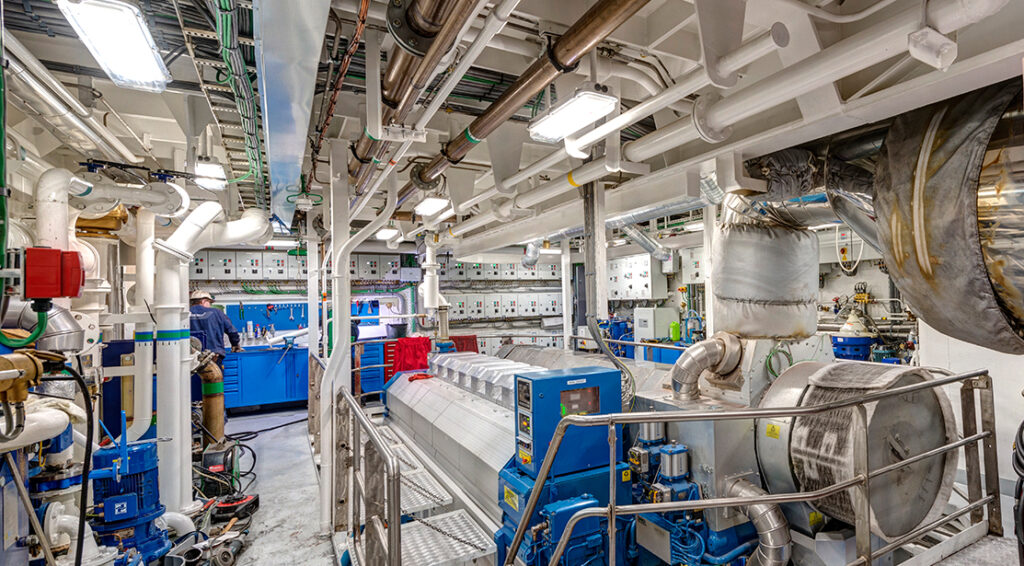The Engine Room Of Tomorrow: A Look At Armada Engine Options For 2025

The Engine Room of Tomorrow: A Look at Armada Engine Options for 2025
The year 2025 is on the horizon, and with it comes a wave of advancements in the automotive industry. As we navigate a world increasingly focused on sustainability and efficiency, the traditional internal combustion engine is facing a significant challenge. The armada of engine options for 2025 promises a diverse and dynamic landscape, where electric, hybrid, and even hydrogen powertrains vie for dominance. This article dives deep into the key contenders, exploring their strengths, weaknesses, and the factors that will shape their future.
The Electric Revolution: A Surge in Battery Power
The most prominent force in the 2025 engine landscape is undoubtedly electric power. Battery electric vehicles (BEVs) offer a compelling combination of zero tailpipe emissions, impressive performance, and a growing infrastructure.
Strengths:
- Zero Emissions: BEVs produce no tailpipe emissions, contributing directly to cleaner air and combating climate change.
- Performance: Electric motors deliver instant torque, resulting in exhilarating acceleration and responsive handling.
- Efficiency: With no combustion process, BEVs are inherently more efficient than internal combustion engines, translating to lower operating costs.
- Quiet Operation: The absence of an engine creates a serene driving experience, further enhancing passenger comfort.
- Growing Infrastructure: The rapid expansion of charging stations worldwide is addressing range anxiety, making long-distance travel more feasible.
Weaknesses:
- Range Anxiety: While battery technology is improving, the limited range of BEVs remains a concern for some drivers, particularly those undertaking long journeys.
- Charging Time: Recharging a BEV can take significantly longer than refueling a gasoline car, requiring careful planning and access to charging infrastructure.
- Battery Cost: The high cost of battery packs is a significant barrier to entry for many consumers, although prices are steadily decreasing.
- Limited Recycling: The disposal and recycling of lithium-ion batteries pose environmental challenges that require ongoing research and development.
Key Players:
- Tesla: The undisputed leader in the electric vehicle market, Tesla continues to innovate with its cutting-edge technology and sleek designs.
- Volkswagen: VW has committed to electrifying its entire model range, aiming to become a major player in the EV market.
- General Motors: GM is aggressively investing in electric vehicles, with its Cadillac Lyriq and Chevrolet Silverado EV promising to disrupt the luxury and pickup truck segments.
- Ford: Ford is also making significant strides in the EV space, with its Mustang Mach-E and F-150 Lightning electric pickups gaining widespread popularity.
Hybrid Powertrains: The Bridge to a Sustainable Future
Hybrid electric vehicles (HEVs) offer a compelling middle ground, blending the efficiency of electric motors with the familiarity of internal combustion engines.
Strengths:
- Fuel Efficiency: HEVs achieve significantly better fuel economy than traditional gasoline cars, reducing fuel consumption and emissions.
- Reduced Emissions: By relying on electric power for a portion of the driving cycle, HEVs emit fewer pollutants than their purely gasoline-powered counterparts.
- Affordability: HEVs are generally more affordable than BEVs, making them a more accessible option for a wider range of consumers.
- Familiar Driving Experience: HEVs retain the familiar driving experience of gasoline cars, with the added benefit of electric power assistance.
Weaknesses:
- Limited Electric Range: HEVs primarily utilize electric power for short distances and low-speed driving, offering minimal range compared to BEVs.
- Complex Technology: The intricate hybrid powertrain system can be more complex and expensive to maintain than traditional engines.
- Lower Performance: HEVs generally offer less acceleration and handling prowess compared to BEVs or high-performance gasoline cars.
Key Players:
- Toyota: Toyota is a pioneer in hybrid technology, with its Prius model achieving immense success and establishing the brand as a leader in the field.
- Honda: Honda has also made significant contributions to hybrid technology, offering a range of models equipped with its renowned i-MMD hybrid system.
- Hyundai: Hyundai is actively expanding its hybrid vehicle lineup, offering a diverse range of models that cater to different needs and budgets.
The Rise of Hydrogen: A Fuel for the Future?
Hydrogen fuel cell vehicles (FCVs) represent a promising, albeit less developed, path to a sustainable future. FCVs utilize hydrogen gas to generate electricity, offering a zero-emission alternative to gasoline engines.
Strengths:
- Zero Emissions: FCVs produce only water vapor as a byproduct, making them a truly emissions-free option.
- Fast Refueling: Refueling a FCV with hydrogen takes comparable time to filling a gasoline tank, addressing the range anxiety associated with BEVs.
- Long Range: FCVs offer a range comparable to gasoline cars, making them suitable for long-distance travel.
Weaknesses:
- Limited Infrastructure: The hydrogen refueling infrastructure is still in its infancy, hindering widespread adoption.
- High Cost: The technology behind FCVs is currently expensive, making them a less affordable option compared to BEVs or HEVs.
- Hydrogen Production: The production of hydrogen gas requires energy, and the current methods often rely on fossil fuels, raising concerns about sustainability.
Key Players:
- Toyota: Toyota has been a leading advocate for hydrogen technology, with its Mirai model serving as a pioneer in the FCV market.
- Hyundai: Hyundai has also ventured into the FCV space with its Nexo model, demonstrating its commitment to hydrogen power.
- Honda: Honda is actively researching and developing hydrogen fuel cell technology, aiming to bring more affordable and efficient FCVs to market.
The Future of Armada Engine Options: A Balancing Act
The 2025 armada of engine options presents a complex and evolving landscape. While electric vehicles are rapidly gaining momentum, hybrid and hydrogen technologies continue to offer viable alternatives. The future will likely see a blend of these technologies, with each playing a specific role in the transition to a more sustainable and efficient automotive industry.
Factors Shaping the Future:
- Government Regulations: Governments worldwide are enacting policies to promote electric vehicles and reduce carbon emissions, creating a favorable environment for BEVs.
- Consumer Demand: Consumer preferences are shifting towards eco-friendly and technologically advanced vehicles, driving the demand for electric and hybrid options.
- Infrastructure Development: The expansion of charging stations and hydrogen refueling stations will play a crucial role in facilitating the adoption of electric and hydrogen vehicles.
- Battery Technology: Advancements in battery technology, such as increased range, faster charging times, and lower costs, will be critical for the widespread adoption of BEVs.
- Hydrogen Production: The development of efficient and sustainable methods for producing hydrogen gas will be essential for the long-term viability of FCVs.
A Multi-faceted Approach:
The future of the automotive industry will likely involve a multifaceted approach, with different engine options catering to specific needs and preferences.
- BEVs: For urban and suburban driving, where range anxiety is less of a concern and charging infrastructure is readily available, BEVs will likely dominate.
- HEVs: For those seeking fuel efficiency and a familiar driving experience, HEVs will remain a popular choice.
- FCVs: As hydrogen infrastructure develops and production methods become more sustainable, FCVs could emerge as a viable option for long-distance travel and heavy-duty applications.
Conclusion:
The 2025 armada of engine options presents a fascinating glimpse into the future of transportation. While electric vehicles are poised to dominate the market, hybrid and hydrogen technologies continue to offer valuable alternatives. The journey towards a sustainable automotive industry will be a collaborative effort, driven by innovation, government support, and consumer demand. As we navigate this dynamic landscape, the choice of engine will become less about choosing a single technology and more about selecting the best solution for individual needs and preferences. The future of mobility is electric, hybrid, and hydrogen – a diverse and exciting journey towards a cleaner and more efficient transportation system.







